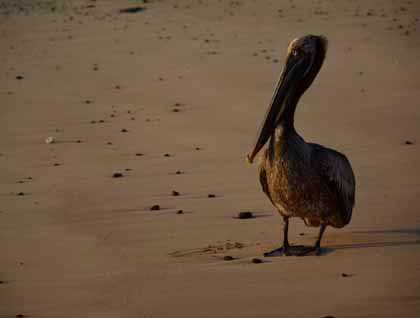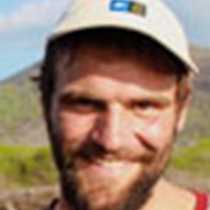Floreana, also known as Charles or Santa Maria, is a peaceful island in the southern region of the Galapagos Archipelago. It was the first island to be inhabited, when Ecuador took possession of the archipelago in 1832, and it is still one of only four inhabited islands, with a population of about 160 people! In 1835, the famous naturalist Charles Darwin visited Floreana Island, and after him many more visitors became part of this island’s unique and bizarre human history, including an array of colorful characters, including marooned whalers, prisoners, colonists, a toothless dentist and a self-proclaimed empress.
The island has many visitor sites, and one of them is Punta Cormorant, named after a British navy ship, the HMS Cormorant, that was launched in 1877 and assigned in 1886 to the Pacific Station (an area along the western coast of South America and extending to the Galápagos Islands and beyond).
This morning we had an early outing, with our groups disembarked at 6:30 a.m., before breakfast. On board the National Geographic Endeavour, it is common to have a variety of outings according to the different interests of our guests. One of the walks was led by our National Geographic photo instructor Juan Carlos, who gave our guests several tips to improve their skills in photography, another walk was led by Carlyn, our on-board art teacher, a unique opportunity to learn drawing techniques “on site”, while other guests went for a nature walk. This site is well known for a fascinating beach of olivine sand, unique endemic vegetation, and a brackish lagoon with flamingos.
After the walks, we came aboard for breakfast as our captain repositioned the ship near Champion Islet. This volcanic cone, with rocky shores, is home to the remnant population of the rare Floreana mockingbird, which was driven to extinction by cats, rats and other introduced predators on the main island.
We explored the islet by Zodiac, in the search of these rare and unique birds, which inspired Darwin in the formulation of his theory of evolution through natural selection. However, there was much more to be observed as well: blue-footed boobies were resting on the rocks, showing their wonderful and colorful blue feet; swallow-tailed gulls were around, as well as brown noddies, Galapagos shear waters, red billed tropic birds, Nazca boobies and frigatebirds! We devoted the rest of the morning to enjoying the underwater realm, either with our glass bottom or by snorkeling. Hundreds of fish of different species, sea lions, sharks, rays and sea turtles gave our guests the experience of a lifetime!
Following a well-deserved lunch, we had our first “Paper to Pearls Workshop”, as part of our special month celebrating the “Conservation in Action” program, we're sharing with our guests one of the most touching and successful projects from the Lindblad-National Geographic Artisan Fund: “The Paper to Pearls" Project. More than 20 guests participated in the workshop, and all of them enjoyed learning how to make beads out of recycled paper, using our old brochures!
Later on, we spent the afternoon exploring the famous Post Office Bay and its surroundings by Zodiac and kayak. There is a small colony of the famous Galapagos penguin around this area, and this afternoon we were very lucky and got to see five of them! This species of penguin lives further north than any other penguin, right on the Equator, and it was a delight for the photographers to capture some images in such good lighting. We finally landed at Post Office Bay. First mentioned in 1793 by British Captain James Colnett, the Post Office Bay tradition consists of using a simple wooden barrel to deposit postcards or letters, without stamps. The next visitors who pass through will go over the correspondence and collect the ones that they can hand deliver back in their countries. So far, thousands of letters and postcards had reach their destinations in this way, and we are proud to say that the old Post Office system established in the South Pacific still works nowadays. Several of our guests found postcards to hand deliver, and were excited to be part of this tradition. We returned to the ship at sunset with some great memories—every day in the Galapagos is spectacular, another great day in Paradise!










